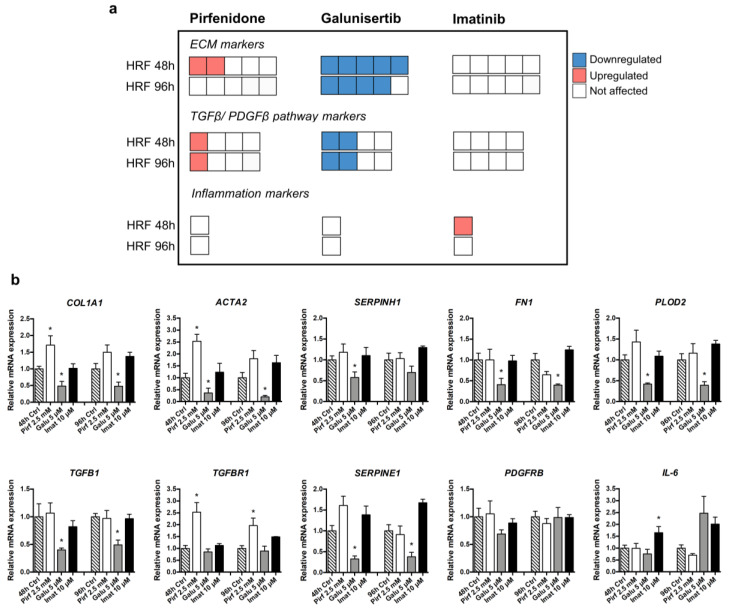Figure 6.
Potency of tested anti-fibrotic compounds to attenuate TGFβ- and PVP40-induced gene expression of fibrosis and inflammation markers in human renal fibroblasts (HRFs). (a) Visual summary of changes in the transcription of selected genes in HRFs after 48 h treatment with pirfenidone 2.5 mM, galunisertib 5 µM, or imatinib 10 µM. Each box represents one gene, while the direction of change is indicated by the color: red, upregulated during 48-h culture; blue, downregulated; and white, not affected by the compound. This diagram only indicates the number of altered genes (without specifying marker genes) and the direction of change, in the following order: downregulation, upregulation, and no change. Evaluated genes were divided in three categories: extracellular matrix (ECM) markers (COL1A1, ACTA2, SERPINH1, FN1, and PLOD2), markers of TGFβ and PDGF signaling (TGFB, TGFBR1, SERPINE1, and PDGFRB), and inflammation marker IL-6. (b) Regulation of abovementioned markers in treated HRFs in detail. Regulation of these transcripts by pirfenidone, galunisertib, and imatinib at lower concentrations is illustrated in Figure S9b. Data are expressed as mean ± SEM, n = 3; * p < 0.05.

